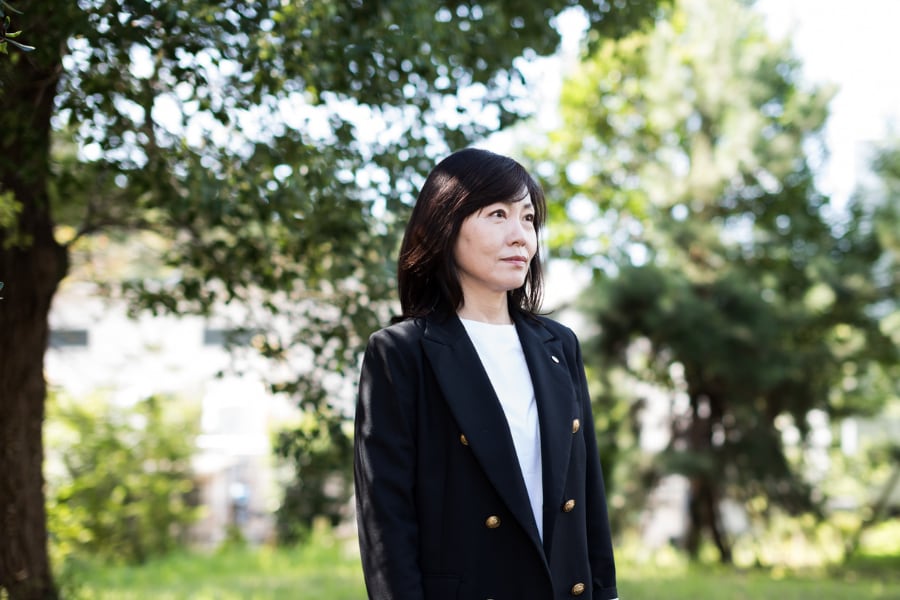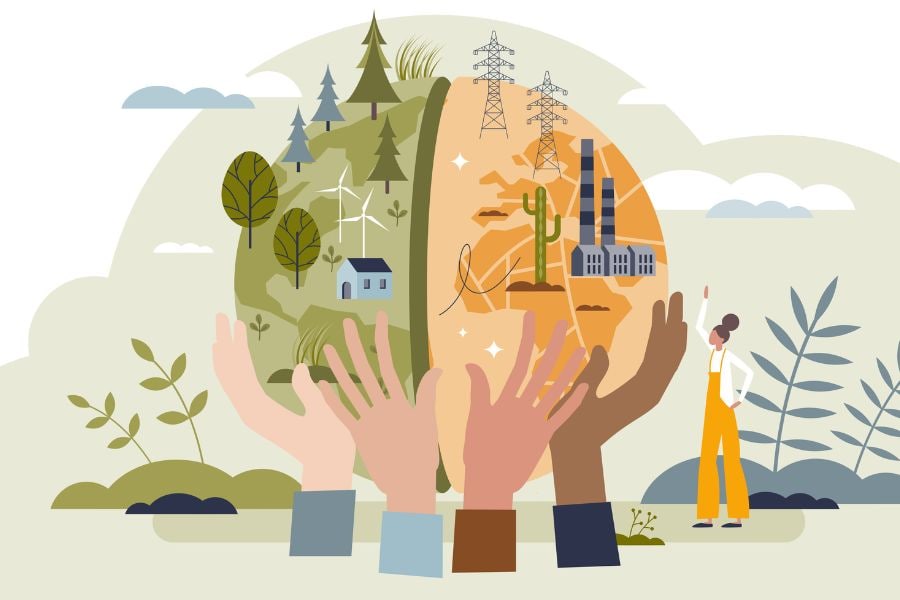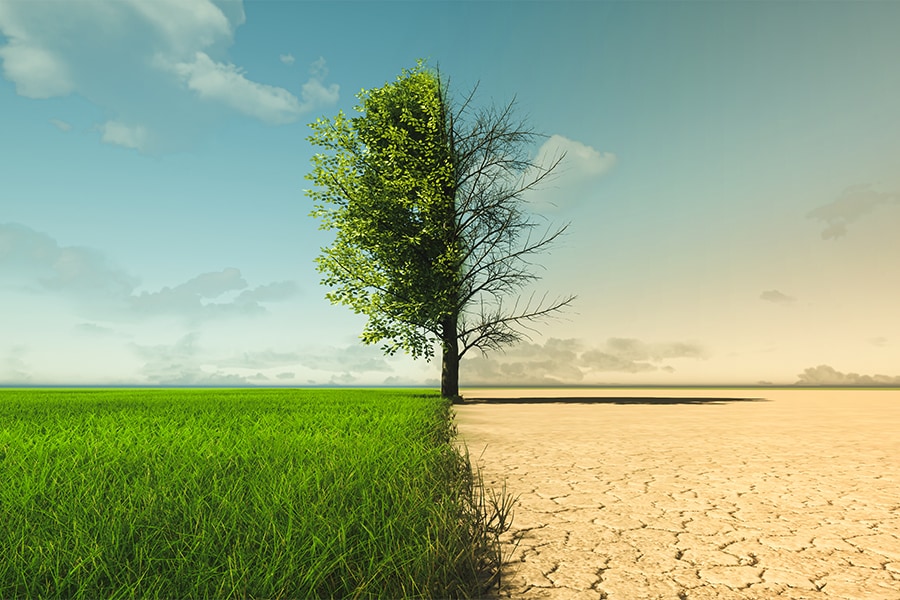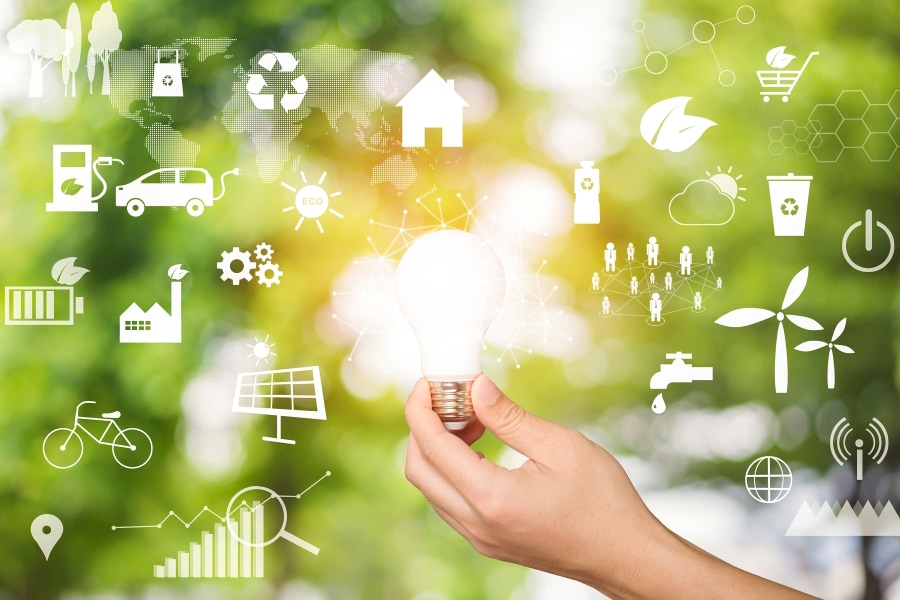Carbon Transformation: CO2 as a Raw Material for Clothing and Energy
Dec. 4, 2023
Editing Team
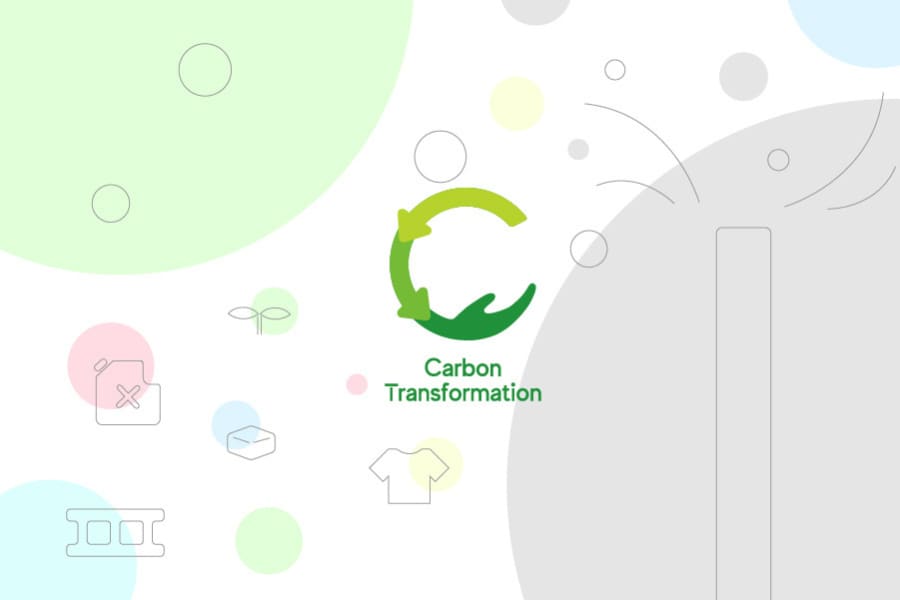
“The era of global boiling has arrived”: These are the words of U.N. Secretary-General Antonio Guterres expressing his sense of urgency about the acceleration of global warming in July 2023 in response to the prediction that the average global temperature is expected to rise. Unprecedented heavy rains, droughts, wildfires, and various other disasters have been reported around the world as a result of global warming.
The main cause of global warming is the increase in carbon dioxide (CO2) emitted by humans in the course of our daily lives. Governments, corporations, and communities across the globe are continuing to make efforts to reduce CO2 emissions from the burning of fossil fuels, with slogans such as “Let’s reduce thermal power generation to reduce CO2 emissions” and “Let’s switch from vehicles with internal combustion engines to electric vehicles (EVs) to reduce CO2 emissions.”
Against this backdrop, groundbreaking research has begun that is aimed at capturing CO2 from the atmosphere and using it as a raw material for clothing and energy. Hitachi's vision for the future is to “Transforming the future one step at a time.” Can this really be achieved? This article looks into the state of the cutting-edge research.
Hitachi’s vision for the future will also be showcased at COP28.
For more details about Hitachi’s exhibition at COP28, see here.
For more details about Hitachi’s exhibition at COP28, see here.
There is a limit to reducing CO2 emissions
Carbon dioxide (CO2), as its name suggests, is a compound of oxygen and carbon. Where does carbon exist on Earth, how much of it exists, and how does it move around? The figure below is a schematic representation of the Global Carbon Cycle Model.
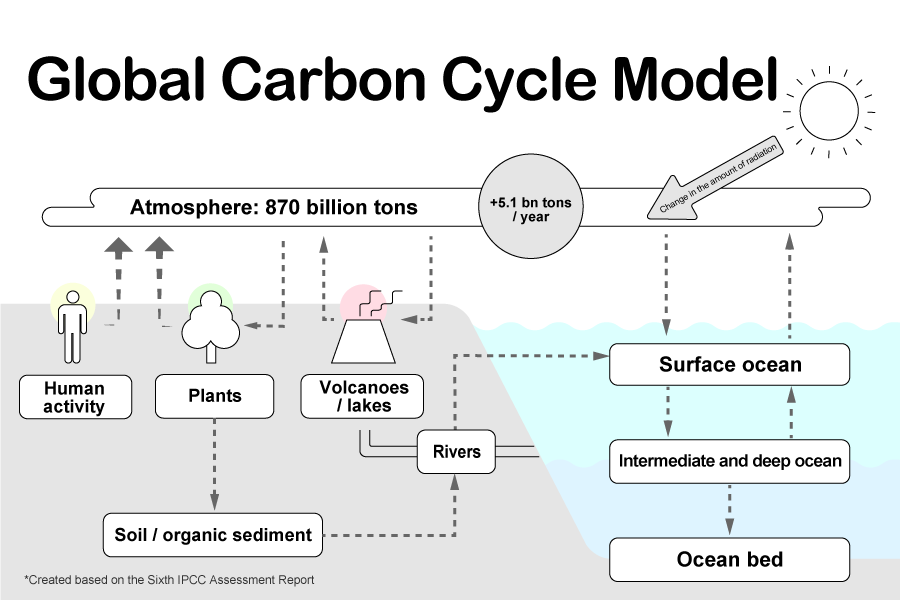
The diagram above shows that plants emit carbon, or CO2, but absorbs CO2 from the atmosphere through photosynthesis. Marine plants also inhabit the ocean emitting and absorbing CO2 in a cycle. However, humans as living organisms cannot absorb CO2, as can be seen by the lack of arrows pointing from the atmosphere to humans.
The amount of carbon released into the atmosphere as CO2 by human activity is on the rise. Furthermore, deforestation is transferring carbon to the atmosphere that was previously absorbed by plants. As a result, it is estimated that 5.1 billion tons of carbon that should have been circulating between plants and the atmosphere annually will remain in the atmosphere and increase.
The loss of forests is also due to human activity. Forests are being cut down and transformed into farmland to produce cotton and other raw materials for clothing. Due in part to global warming, the air has become unusually dry, and large wildfires have become more frequent, which has also contributed to the increasing loss of forests.
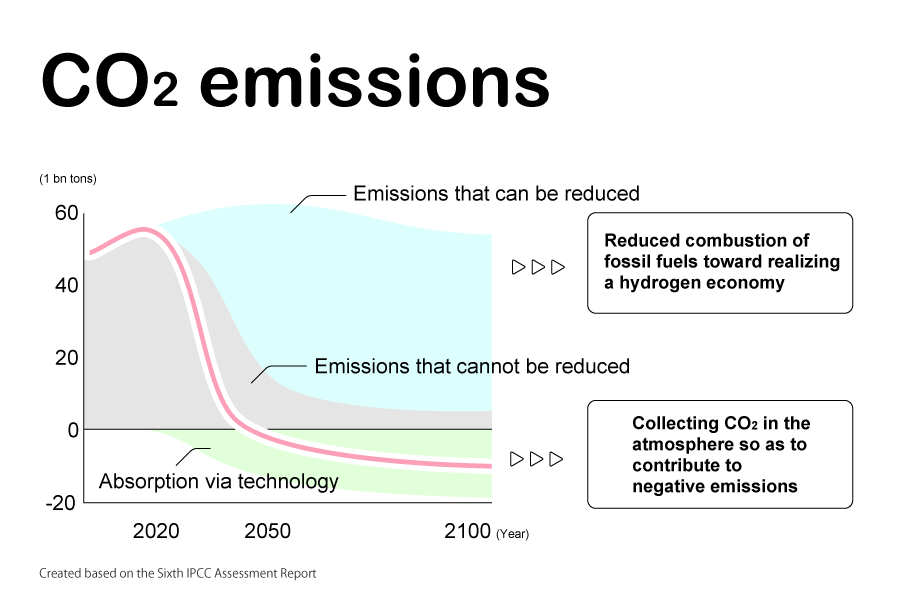
Countries around the world are currently tackling initiatives to reduce CO2 emissions. However, since human activities cannot be reduced to zero, it is impossible to reduce some emissions. The key to this is a completely new technology that captures CO2 from the atmosphere and that uses it as a raw material that is useful to society.
DAC and CCU: Capture and utilization
In order to utilize CO2, it is first necessary to collect CO2 from the air. “Direct Air Capture” (DAC), which refers to technology that captures CO2 directly from the atmosphere, is a key concept in reducing CO2 emissions to near zero. Specifically, air is drawn into the equipment, and only CO2 is extracted by chemical reaction or adsorption. Research is underway to use liquid dissolution, absorbents, and thin films as extraction methods.
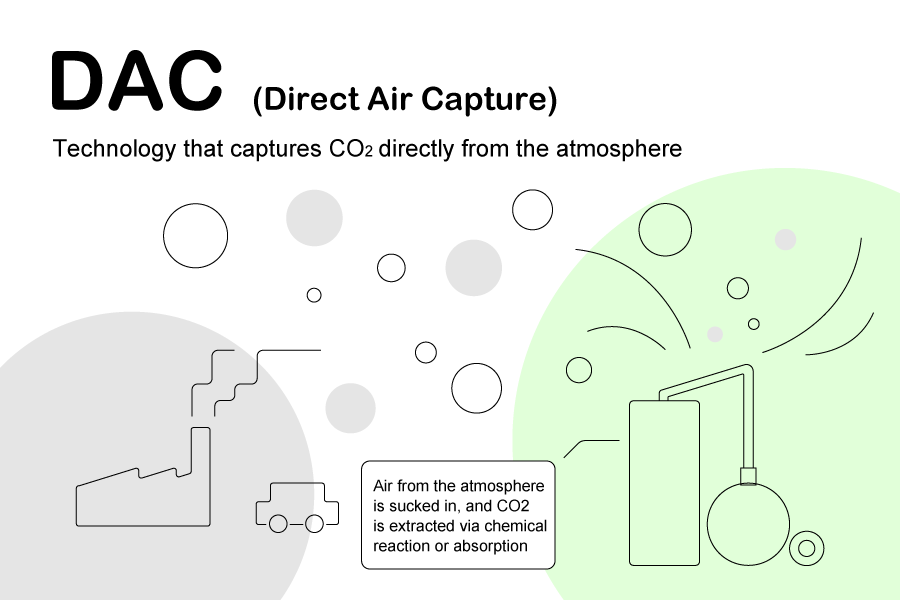
The technology to utilize the captured CO2 is called "Carbon Capture and Utilization” (CCU), which can be divided into two main types: direct use of CO2 and indirect use, in which CO2 is converted into something else.
An example of direct use that many people would be familiar with is the carbon dioxide gas contained in soft drinks and alcoholic beverages. Use in beverages is not the only use for carbon dioxide gas. Plants, algae, and other living organisms use CO2 to accelerate photosynthesis, so it can also be used to stimulate growth in greenhouses. CO2 can also be used to cool and transport perishable foods by solidifying it into dry ice.
However, direct use of CO2 has limits in the amount and situations that it can be used in. The other key concept is indirect use. In addition to chemical fibers, such as polyurethane, which can be used for clothing, concrete and fuel produced by mixing hydrogen and CO2 are envisioned as possibilities and are being developed for practical use.
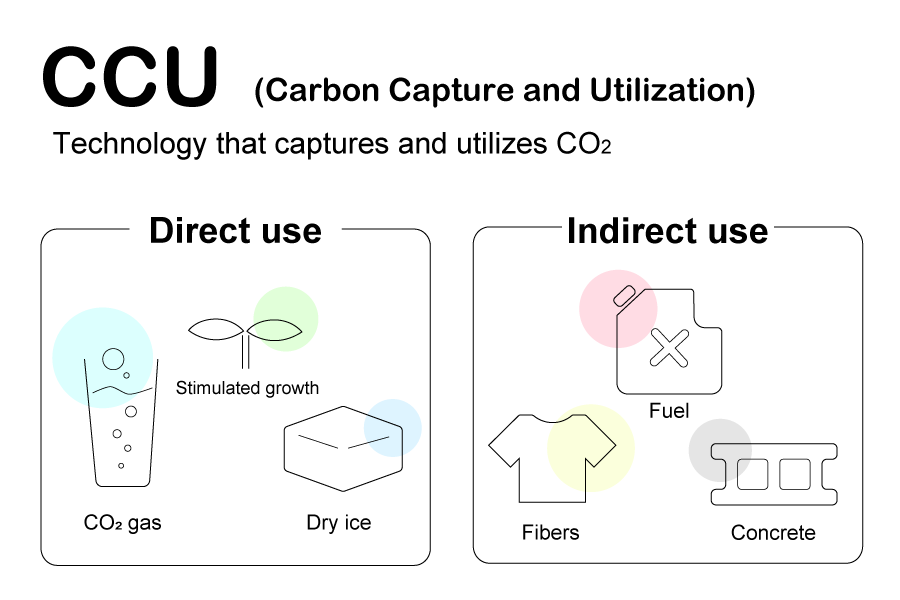
Difference between CCU, CCS, and CCUS
Another technology that can be used to mitigate CO2 is "Carbon Capture and Storage” (CCS), which is a term similar to CCU. This is a carbon storage technology that reduces the amount of CO2 in the atmosphere by sealing CO2 in an underground geological formation where it cannot escape, rather than using it.
DAC and CCS are similar in the sense of capturing CO2, but DAC collects CO2 from the atmosphere, while CCS collects high concentrations of CO2 from factories and thermal power plants, so the collection locations and forms are different. CCU and CCS are sometimes referred to together as “Carbon Capture, Utilization, and Storage” (CCUS).
The operation of CCU and CCUS has only just begun. In June 2023, Japan's Ministry of Economy, Trade and Industry (METI) formulated a "Carbon Recycling Roadmap" to achieve the carbon neutrality goal by 2050, and the roadmap outlines that CO2 utilization is scheduled to begin around 2030.
Carbon transformation
In 2022, Hitachi also started a project to research DAC and CCU. While utilizing its existing catalyst and device development technologies, Hitachi will tackle technological development with an eye toward discovering the social issues need to be solved by 2050.
The concept of the research project is “Carbon Transformation” and the goal is to create a CO2 cycle through human activities that did not appear in the Global Carbon Cycle Model. In doing so, Hitachi will restore balance to the Earth’s CO2 cycle. Tomoko Suzuki, Hitachi's Corporate Chief Researcher leading the project, said with enthusiasm: “This research will change the relationship between CO2 and people. It is also a project that will contribute to the well-being of people across the globe.”

People living in developed countries have achieved economic development and convenient lifestyles as a result of emitting large amounts of CO2, and developing countries are mimicking this model. In search of a richer life and increased economic benefits, people in developing countries are cutting down forests. If raw materials and fuels can be produced from CO2 through the realization of carbon transformation, the possibility of preventing deforestation will increase.
An artificial photosynthesis device that is being developed via the research project is expected to be put into practical use, and this device will perform the same function as photosynthesis in plants: CO2 can be converted into oxygen and raw materials or fuel via light and water.
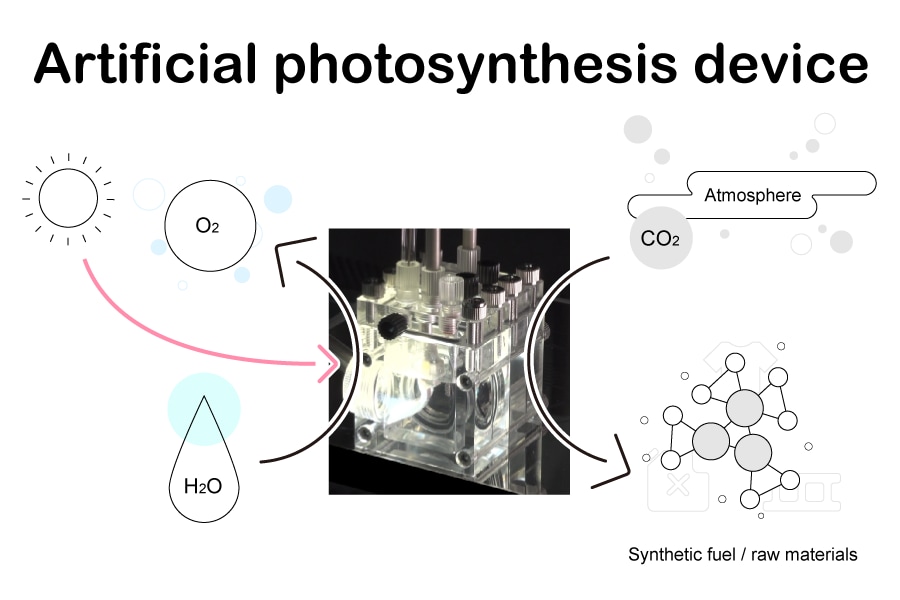
While the commercialization of this technology is eagerly awaited, Suzuki says: “There are challenges.” In order to truly recycle CO2, it is important to make allies who share the same vision. These are the people who will realize the recovery of CO2 and the people who will actually use the resulting raw materials and fuels toward transforming the economy into a circular economy.
Even if she encounters challenges, Suzuki refuses to give up.
“In order to restore the balance of the CO2 cycle on Earth, I would like to increase my allies by communicating the concept to a wide range of industries. Through collaborative creation with my allies, I aim to develop technologies that society can easily accept.”
